ThousandEyes provides end-to-end visibility from users to applications, hop-by-hop network path performance monitoring, the capacity to identify internet failures, and synthetic testing tools for websites, clouds, SaaS, and hybrid apps. Some of the docs thousandeyes internet outage maps show how the technology can track network paths across multiple service providers to help businesses find problems with hybrid network connections and how they affect the user’s digital experience.
To observe and understand underlying dependencies across the Internet and in the cloud, businesses use open source thousand eyes. In order to spot issues early on and effectively address them, ThousandEyes also provides visibility into the delivery of web apps over SD-WAN, cloud, internet, and hybrid networks. Even though docs It has these features, customers and businesses that want to monitor network and application performance in a more advanced way often look for alternatives to ThousandEyes.
However, thousandeyes customers look for alternatives to it because using it requires some prior expertise. It’s crucial to conduct an extensive study on the relevant software based on its features and capabilities while seeking suitable Thousand Eyes alternatives. The top 10 Thousand Eyes rivals and alternatives are covered in this article.
What is ThousandEyes?
A digital experience monitoring software called ThousandEyes aids IT firms in debugging network infrastructure, internet performance mapping, and application delivery. The platform offers consumers a 360-degree perspective of digital services by providing them with access to internet-scale visibility from thousands of worldwide monitoring vantage points. Also, the ability to do transactions with multiple steps and load pages within the same app lets users simulate real customer experiences in real time.
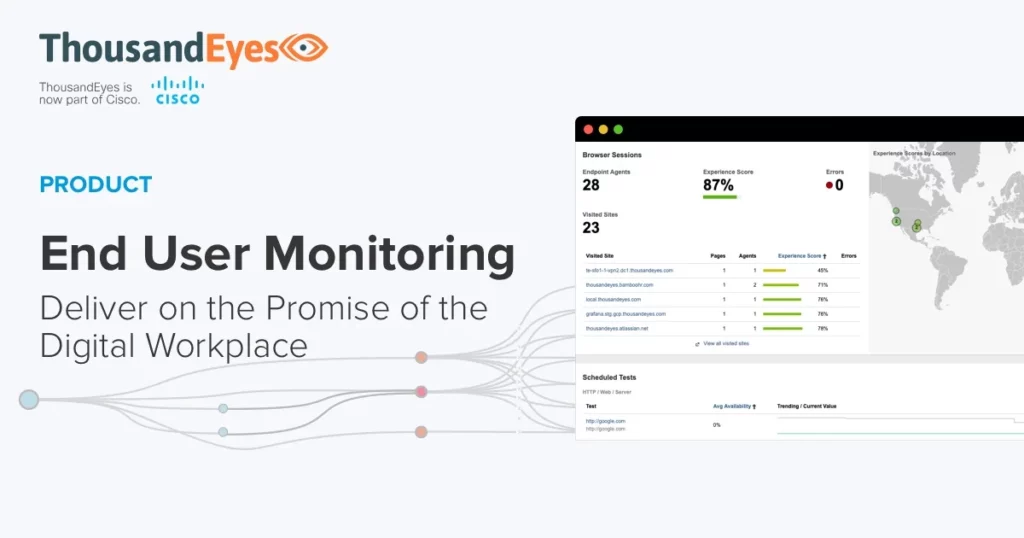
On a single site, open source thousand eyes offers multi-protocol testing (FTP, HTTP, SIP, RTP, and DNS) that may gauge a service’s availability and response times based on specific networks. Additionally, the software’s DNS tracking and DNSSEC validation mechanisms guarantee that crucial DNS services operate as intended. Users may rely on ThousandEyes to provide an integrated picture of many networks and services that together provide the best possible customer experience.
Additionally, the software has proprietary cross-correlation algorithms with dynamic graphics that make it simple for IT organisations to take the necessary action, pinpoint issues, schedule service rollouts, and fix problems more quickly.
6 Best ThousandEyes Alternatives For Performance Monitoring
This article talks about best alternatives to ThousandEyes based on how they work with technology, how they are used, and how much they cost.
#1. SiteUptime
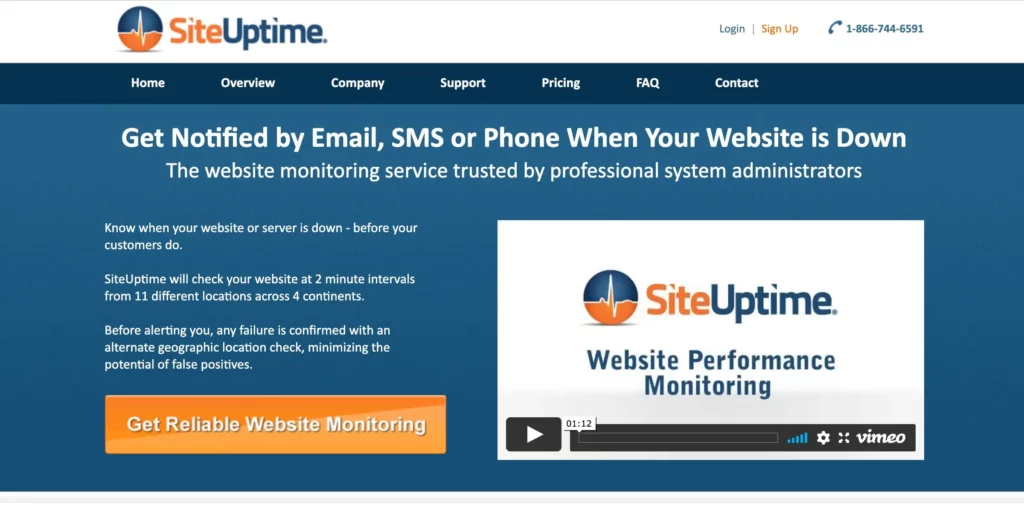
Every two minutes, SiteUptime analyses your website across eight locations on five continents and offers free and premium accounts with extra features. They run a number of checks to deliver precise notifications through email, phone, and SMS, double-verifying whether your site is down or not. If there is any downtime, it immediately gives you a notification so you may address the issue before any of your visitors are harmed.
It is a free alternative to thousandeyes that can investigate the following protocols at 2, 5, 15, 30, and 60-minute intervals: HTTP, SSL, FTP, DNS, Ping, and custom TCP ports. For just $10 a month, the premium subscription offers advanced features including three monitors, a 2-minute time interval, DNS monitoring, API access, SMS, and phone alerts. Paid customers can also get statistics and create multiple alert contacts. The destinations, however, are the same in both the free and paid editions.
- 8 different monitoring stations
- Feature-rich designs that are inexpensive
- Tracking with HTTP, HTTPS, FTP, SSL, Ping, and ports
- individual port tracking
- Monthly uptime reports in detail
- Multiple contact alerts through email, SMS, and phone call
- API accessibility for automated processes (for developers)
#2. Dynatrance
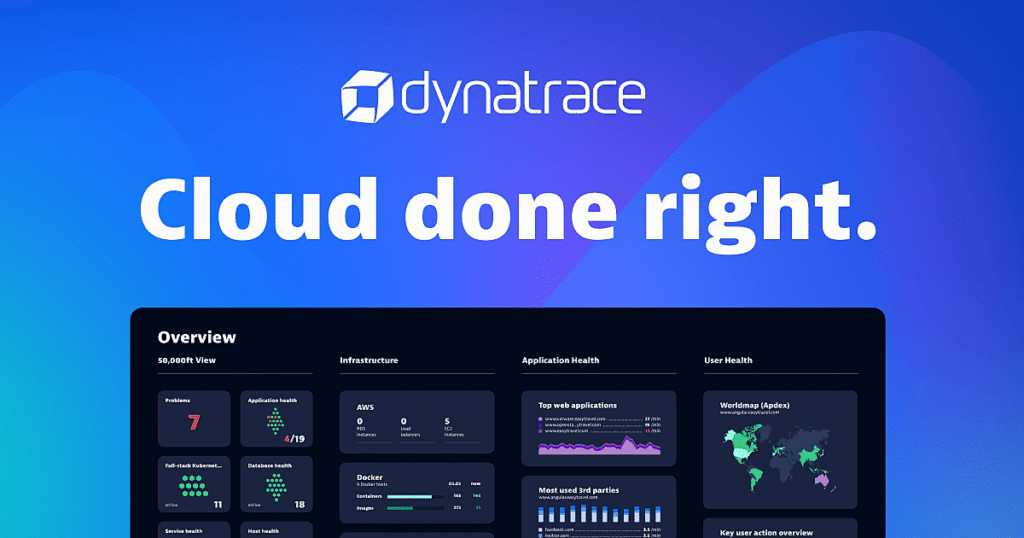
This software, known as All-in-One Performance Application Monitoring, enables real-time monitoring, application performance analysis, network monitoring, server monitoring, and process monitoring. It is mostly used by startups and large corporations. Through the use of intelligent software, they assist in reducing cloud complexity. They were also among the first monitoring services to offer consumers a pay-as-you go pricing model. Dynatrance is now available for free. Additionally, there are unique initiatives accessible to entrepreneurs.
- Monitoring of the infrastructure
- Application security
- Business analytics, and cloud automation
- Technologies Supported by an Open Ecosystem
#3. Pingometer
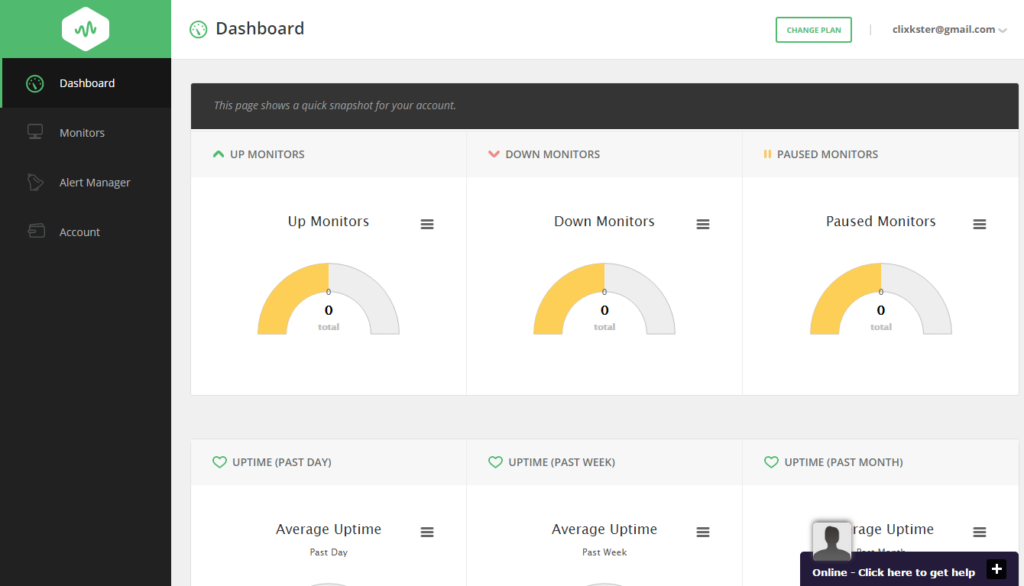
Pingometer which is used by several household brands including AMD, American Red Cross, Oracle, McCafee, Virgin, Cisco, VMWare, and Virgin, among others. They have thousands of people all over the world who accurately check their websites. For accurate results, they use a battery of tests to confirm the outage twice. They provide a straightforward yet effective control panel to thoroughly analyse all of your displays.
You can monitor transactions using RUM, DNS, POP3, SMTP, TCP, and HTTP/HTTPS protocols for 1 to 30 minutes every day. You are alerted whenever it finds a problem by SMS, Twitter, emails, phone calls, and web hooks. To notify other team members about downtime, you may also designate alerting contacts. There are four premium packs and one bonus pack available, each with a unique set of materials.You are only permitted to track one site from one place while using a free account.
The first premium subscription, called “Small,” costs $9 per month and allows you to check five sites in 1-3 minutes from three locations. However, it does not support SSL certificate verification or alerting multiple contacts.
- 12+ places throughout the world with various alerting methods
- 1-to-30-minute time range
- utter correctness with several tests
- API access for optimum advantages
- Different monitoring techniques
- Historical reports for headers, status codes, response times, uptime
#4. JetPack

Lacking sufficient funds to purchase paid services? Use JetPack, then. It is among the greatest WordPress plugins and has a tonne of features, like traffic states, social sharing, extra widgets, comment notification, image CDN, and uptime and downtime warnings. Other features like complete page load time, FTP accounts, POP, IMAP, app tracking, and others are not supported. However, it is an best thousandeyes replacement that is “FREE” and perfect for small to medium-sized websites.
It is open to an infinite number of blogs. JetPack is a really helpful tool that I use to monitor the uptime of my websites. For customers on a tight budget, JetPack can be a lifesaver if all you’re worried about is detecting server outages for blogs that use WordPress. When there is a problem with your blog, you can get free information that is mostly accurate. The absence of support for other CMSs like Joomla, Drupal, or Magento is the sole drawback. However, it is not a scam like this Automattic plugin.
- Free uptime/downtime monitoring for your website
- Emails containing site up/down status
- Install the Jetpack plugin, and it will immediately begin to function.
#5. HostTracker
![]()
- More than one warning mechanism
- A good tool for modestly funded tiny sites
- 140+ sites throughout the world
- Quick-checking capability
- Monthly data in great detail in a variety of file formats
- Large companies like Microsoft, Kaspersky, Colgate, Panasonic, etc. trust it.
#6. NodePing
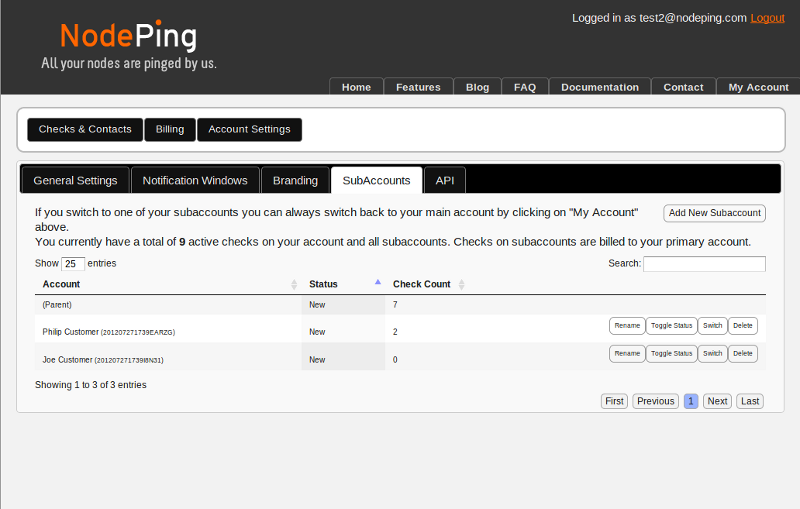
NodePing is a paid alternative to thousandeyes, but you can sign up for a 15-day free trial to test out all of their features. They allow you to scan through dozens of servers throughout the world at intervals of one minute, just like the top tools. More than 20 servers are located in Europe, North America, Latin America, and East Asia/Oceania to ensure reliable results. You may also test HTTP, HTTPS, DNS, MySQL, RBL, radio streaming, SIP, SMTP, POP3, IMAP4, spam filtering, and virus scanning.
Yes, it offers options for monitoring all the main protocols, and it is the greatest solution for advanced users who like to have access to all the server monitoring functions in one location. Another excellent function is content matching. The “Starter” plan, which costs $8 per month, permits five URLs spaced out by 60 seconds. It is the most basic package and has a very small number of features.
You must purchase a more expensive subscription, such as Business or Provider, which cost $15 and $50, respectively, if you want brand notifications and all other capabilities. Users can set up sub-accounts and conduct business in either of them. The provider bundle, however, is created especially for resellers.
- Unlimited Twitter, email, SMS, and voice notifications
- worldwide locations of dozens of nodes
- For bespoke usage, full API access
- Support many protocols to check for problems.
- Several features and affordable pricing
- blacklist detection for IP addresses

